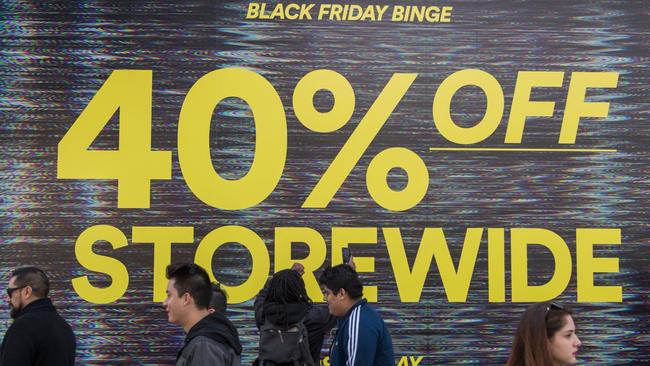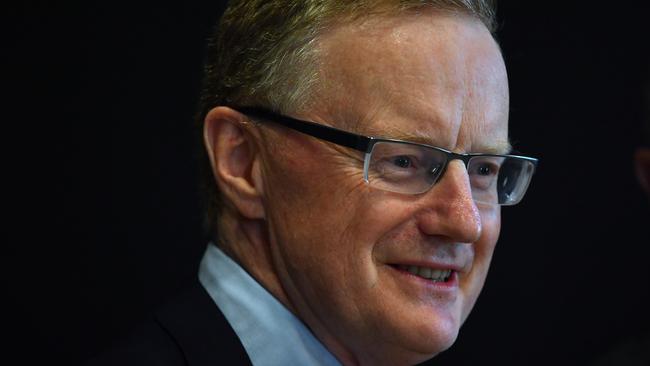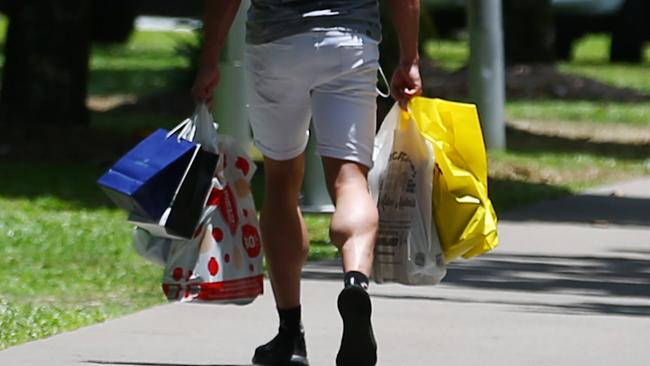
Consumers slept through the third quarter despite interest-rate reductions and tax cuts delivering a strong boost to household incomes. The household savings rate jumped instead as the stimulus was saved for a rainy day.
Data on Thursday show retail sales remained flat in October, marking a poor start to the fourth quarter for consumers and cementing bets that the Reserve Bank of Australia (RBA) will be forced to cut interest rates again when its board meets next on February 4.
It was a sharp and unexpected decline in consumer spending from mid-2018 that eventually prompted the central bank to radically shift course and cut interest rates for the first time since 2016.
READ MORE: Rise of the prudent Aussie consumer makes it tough for RBA | Low rate of growth tests everyone’s patience
Australia now has a two-tiered economy, with private demand falling and effectively in recession, while booming government spending on big-ticket infrastructure projects is otherwise propping up growth.
But with consumption accounting for almost 60 per cent of the economy, the RBA always has a fixation on trends around spending in shops. Without vigorous growth of private demand, hiring will slow and investment will cool. The situation is serious.

The RBA governor Philip Lowe last month revealed just how the central bank would conduct quantitative easing if it is needed. He said then that he didn’t think it would be required, adding the economy is set to recover gradually.
But Dr Lowe’s optimism predated this week’s news of poor third-quarter GDP growth, flat household consumption and flagging October retail sales. To be sure, if the RBA had knowledge at its monthly meeting on Tuesday about how consumers are staying away from malls and shops in droves, it may well have cut interest rates again.
The start of 2020 now looks likely to be marked by downgrades to the RBA’s growth forecasts, and renewed urgency for it to lower the official cash rate from its current record low of 0.75 per cent to 0.50 per cent.
That will leave the RBA just one cut away from the effective lower limit for the official rate recently put at 0.25 per cent. A further cut will see financial markets buzzing about the fast approach of bond buying.
Most economists had thought quantitative easing would be a thing for late 2020. But if consumers remain shackled, expect it sooner. But just perhaps, there is a glimmer of hope that consumers have started raiding their mattresses and cookie jars for a cash splurge.

Commonwealth Bank of Australia reported Black Friday and Cyber Monday sales were well attended and there were anecdotal reports of stores jammed with shoppers in Sydney as customers stormed discount bins.
Kristina Clifton, senior economist at Commonwealth Bank of Australia, took some time to look at the big bank’s credit card data covering the sales period, and found spending lifted around 87 per cent on Black Friday, compared with the average spend in the three weeks prior.
Over the four-day sales period, online spending in department stores and electronic goods retailing rose 238 per cent compared with the average November daily spend, while in-store spending was up 153 per cent, Ms Clifton said. Online clothing sales rose 146 per cent and in-store clothing sales rose 52 per cent.
Home-furnishings-and-equipment spending was up 116 per cent online, and 33 per cent in store, she added.
A strong extended weekend sales period won’t revive the economy on its own, but the CBA data might offer a peek into pent-up demand that might be about to spill into shops. From his office that looks down upon Sydney’s retail district, RBA governor Lowe will be urging the frenzy on.
Dow Jones Newswires




Quantitative easing could become a reality in Australia much earlier than currently expected if a lengthening spending lull by consumers doesn’t end soon.